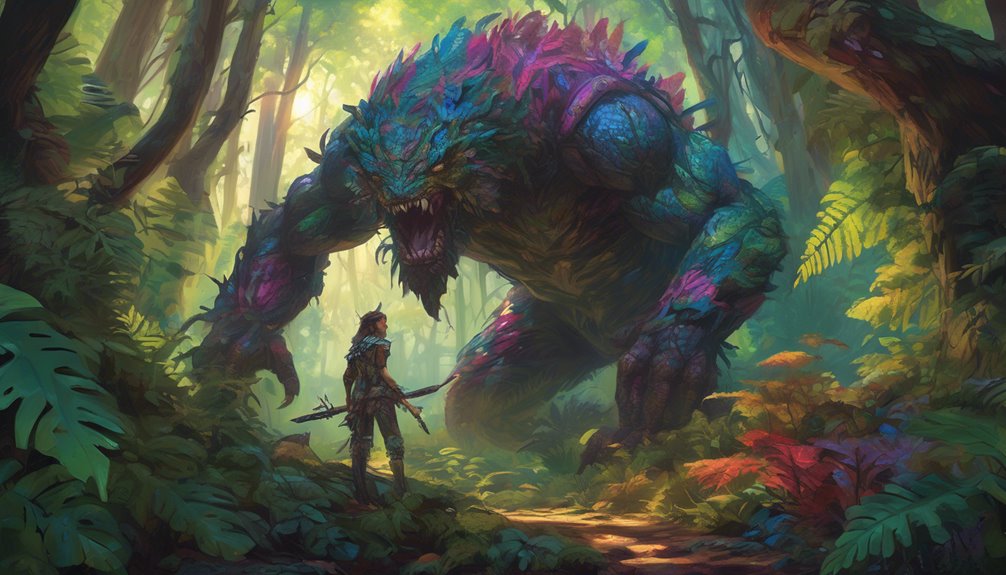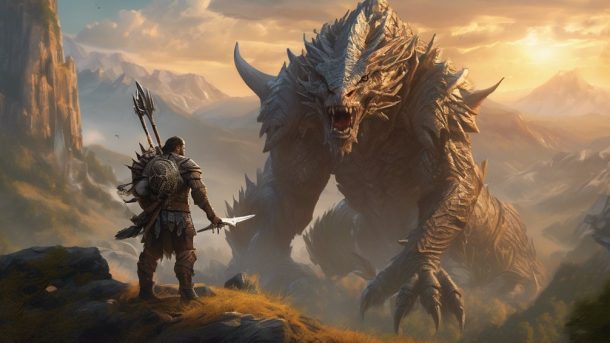Overview of Monster Weaknesses in MH Wilds
In order to successfully navigate the diverse challenges presented in Monster Hunter Wilds, an understanding of monster weaknesses is paramount. Identifying these vulnerabilities allows hunters to devise effective strategies tailored to each encounter. For instance, exploiting elemental weaknesses can greatly amplify damage output, while targeting specific body parts can incapacitate formidable foes. Utilizing the right weapon types enhances these advantages, ensuring a more efficient hunt. Additionally, knowledge of monster behaviors in different environments aids in anticipating movements. Ultimately, mastering monster weaknesses not only enriches the hunting experience but also cultivates a deeper appreciation for the intricate ecosystem within Monster Hunter Wilds.
Detailed Monster Classifications

Understanding monster weaknesses serves as a foundation for hunters, creating a pathway to explore the complexities of monster classifications in Monster Hunter Wilds. Monsters are categorized into distinct types based on their attributes and behaviors. Bird Wyverns, like Gypceros, utilize cunning tactics, while Brute Wyverns, such as Doshaguma, rely on raw strength. Fanged Wyverns combine mammalian and reptilian traits, presenting unique challenges. Additionally, Apex Monsters represent the highest threat level, demanding precise strategies. Recognizing these classifications enables hunters to tailor their approaches, enhancing their effectiveness in encounters and fostering a deeper appreciation of the intricate ecological relationships within the game.
Exploring New Monsters in MH Wilds
What fresh challenges do the new monsters in Monster Hunter Wilds present to hunters enthusiastic for adventure? The introduction of formidable creatures like Arkveld, Ajarakan, and Balahara greatly alters the hunting landscape. Each monster showcases unique attributes and combat styles, compelling hunters to adapt their strategies. For instance, the Chatacabra employs its surroundings for ambushes, while the Rey Dau’s agility challenges even seasoned hunters. Understanding these new threats enhances teamwork and planning, fostering a cooperative hunting environment. Engaging with these monsters not only tests skills but also encourages a deeper appreciation for the intricate dynamics of the game’s ecosystem.
Legacy Monsters and Their Impact
The return of legacy monsters in Monster Hunter Wilds greatly enriches the hunting experience, offering both nostalgia and fresh challenges for seasoned players. Iconic creatures like Rathalos and Gypceros not only evoke memories of past encounters but also boast enhanced visuals and improved AI that demand new strategies. Their presence serves to reconnect players with the franchise’s history while providing opportunities for teamwork and skill refinement. Additionally, these legacy monsters profoundly impact the ecosystem, influencing the behavior of newer species and enriching the overall gameplay experience. For hunters, mastering these formidable foes is essential to achieving success in the evolving landscape of Wilds.
Understanding Monster Types and Archetypes
How do the various types and archetypes of monsters in Monster Hunter Wilds shape the hunting experience? Understanding these classifications enables hunters to devise targeted strategies. Bird Wyverns, like Gypceros, employ cunning tactics, while Brute Wyverns rely on sheer strength, demanding different approaches. Fanged Wyverns blend characteristics of mammals and reptiles, creating unique challenges. Defensive Tanks, such as Gravios, showcase heavy armor, necessitating precision and patience. Each archetype not only defines combat styles but also enhances the ecosystem’s complexity, enriching the hunters’ journey. Knowledge of these monsters fosters effective teamwork and preparation, ultimately leading to more successful and rewarding hunts.
The Role of Dynamic Environments
Although often overlooked, dynamic environments in Monster Hunter Wilds play an essential role in shaping the hunting experience. These ecosystems directly impact monster behavior, forcing hunters to adapt their strategies. Weather changes can alter territorial aggression, while seasonal cycles affect resource availability. Additionally, environmental interactions among monsters create unique opportunities for hunters to exploit. The introduction of environmental hazards adds complexity, demanding quick thinking and strategic planning. Each hunt becomes distinct, enhancing excitement and engagement. Understanding these dynamic elements not only enriches gameplay but also fosters a deeper connection to the environment, ultimately cultivating more effective and informed hunters.
Essential Tips for Effective Hunting
Understanding the dynamic environments in Monster Hunter Wilds lays the groundwork for effective hunting strategies. Hunters should prioritize weapon maintenance to guarantee maximum damage output. Upgrading gear enhances survivability against formidable foes. Prior to hunts, consuming meals provides essential stat boosts, improving performance considerably. Mastery of Wyvern Riding allows for strategic control of monsters, turning the tide of battle. Finally, targeting weak spots on monsters maximizes damage and shortens encounters. By integrating these tips, hunters can elevate their gameplay, fostering a deeper connection to the ecosystem and enhancing the overall hunting experience for themselves and their fellow players.
Additional Resources for Hunters
While starting the journey through Monster Hunter Wilds, players can greatly enhance their experience by utilizing various additional resources tailored for hunters. Extensive guides, including detailed monster weakness charts and hunting strategies, serve as invaluable tools for preparation. Online forums and community websites foster collaboration, allowing hunters to share insights and strategies. Video tutorials offer visual demonstrations of effective techniques and weapon mastery. Moreover, KBoosting provides boosting services, enabling players to tackle challenging content while focusing on enjoyment. By leveraging these resources, hunters can develop their skills, optimize their gameplay, and ultimately enrich their hunting adventures.
Frequently Asked Questions
How Do I Effectively Track Monsters in MH Wilds?
Effective monster tracking in MH Wilds involves observing environmental clues, analyzing footprints, and utilizing scouting techniques. Understanding monster behavior patterns and adapting to dynamic environments enhances tracking success, ensuring hunters are well-prepared for encounters.
What Crafting Materials Are Essential for Gear Upgrades?
Crafting materials for gear upgrades include monster parts, ores, and herbs. Each material serves a unique purpose, facilitating weapon enhancements and armor improvements, ultimately empowering hunters to face increasingly formidable challenges in their adventures.
Are There Specific Monsters to Prioritize for Resources?
In prioritizing monsters for resources, hunters should focus on apex predators and legacy monsters, as they yield rare materials. Understanding each monster’s unique drops enhances resource collection, ultimately streamlining gear upgrades and enhancing hunting efficiency.
How Can I Improve My Hunting Party’s Coordination?
Improving hunting party coordination requires clear communication, strategic role assignments, and practicing group tactics. Regularly discussing plans and adapting to each member’s strengths enhances teamwork, resulting in more efficient hunts and successful monster encounters.
What Are the Best Locations for Gathering Items?
The best locations for gathering items include resource-rich zones, such as verdant forests and rocky cliffs. These areas often host valuable materials, providing hunters with essential resources for crafting and upgrading equipment to enhance their hunting capabilities.




